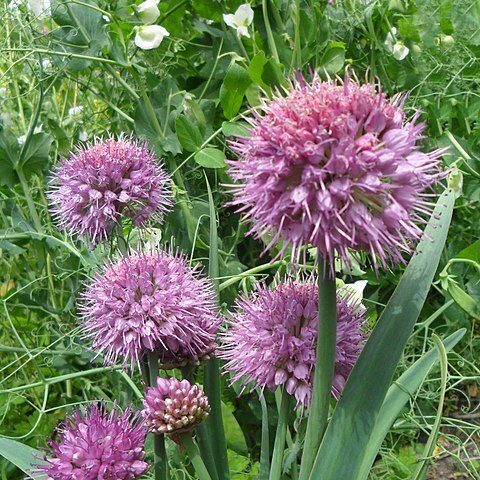Bulbs usually paired, ovoid to ovoid-cylindric, 1--2.5 cm in diam.; tunic brown to yellowish brown, leathery, apex separated, usually fibrous. Leaves broadly linear, usually falcate, shorter than scape, (3--)5--15 mm wide, flat, smooth, apex obtuse. Scape 20--40(--60) cm, terete, covered with leaf sheaths for ca. 1/2 its length. Spathe 2-valved, persistent. Umbel globose, densely many flowered. Pedicels subequal, slightly shorter than to 2 × as long as perianth, bracteolate or ebracteolate. Perianth pale red to purple-red or white; segments oblong to narrowly so, (4.5--)6--8(--9.4) × 1.5--3 mm, apex obtuse, sometimes retuse; inner ones subequaling to slightly longer than outer. Filaments subulate, slightly shorter than than to 2 × as long as perianth segments, connate at base and adnate to perianth segments for ca. 1 mm; inner ones wider than outer at base. Ovary subglobose, with concave nectaries at base. Style exserted. Fl. and fr. Jun--Sep. 2 n = 32.
More
An onion family plant. A bulb plant. The bulbs are usually in pairs. They are 1-2.5 cm across. The covering is brown to yellowish brown and leathery. It grows to 40 cm high and 12 cm across. The leaves are broadly linear. They are 5-15 mm wide. They are flat and smooth. The scape is 20-40 cm long. It is covered with leaf sheaths for 1/2 its length. The flower head is round and dense with many flowers.

